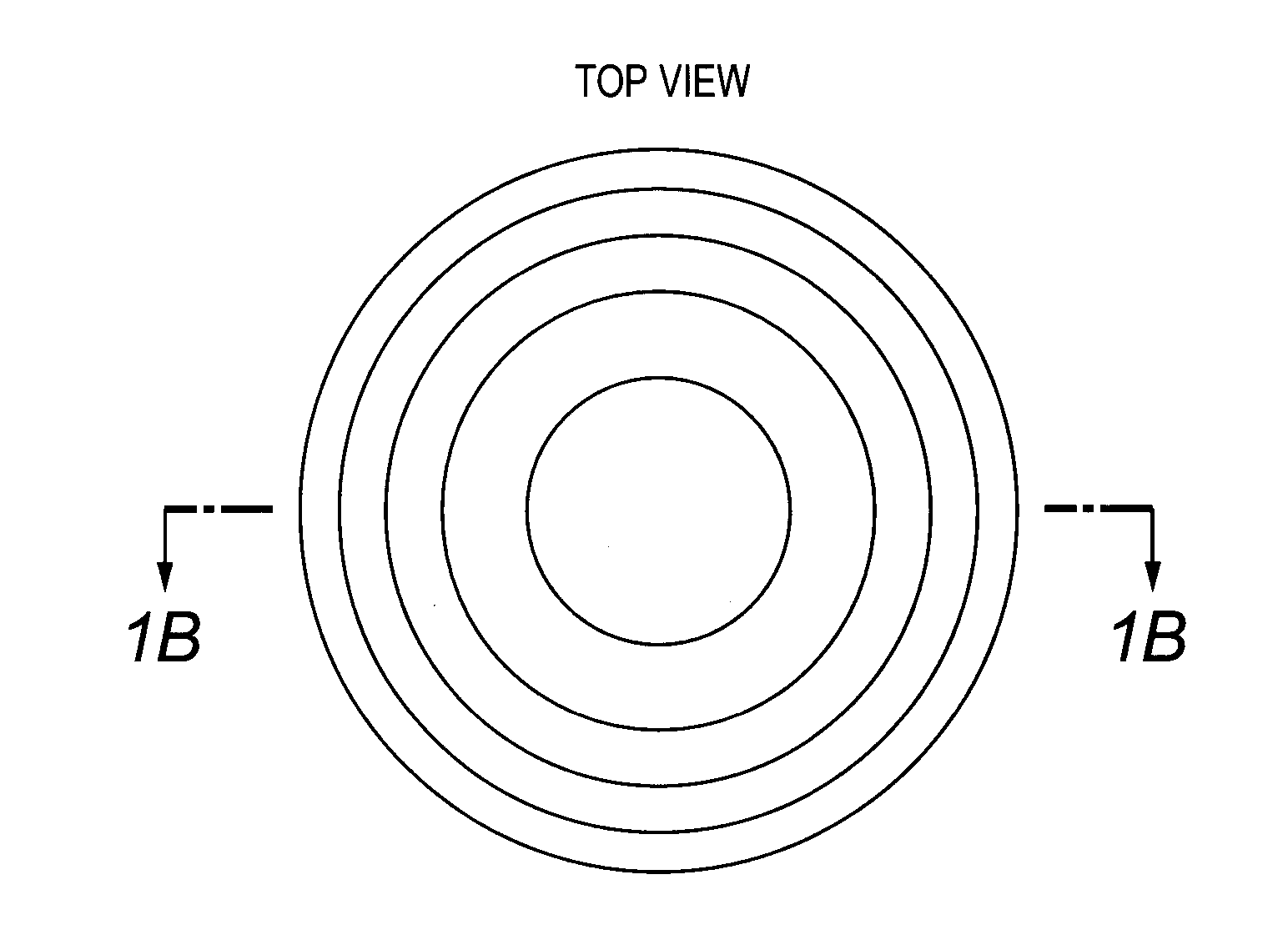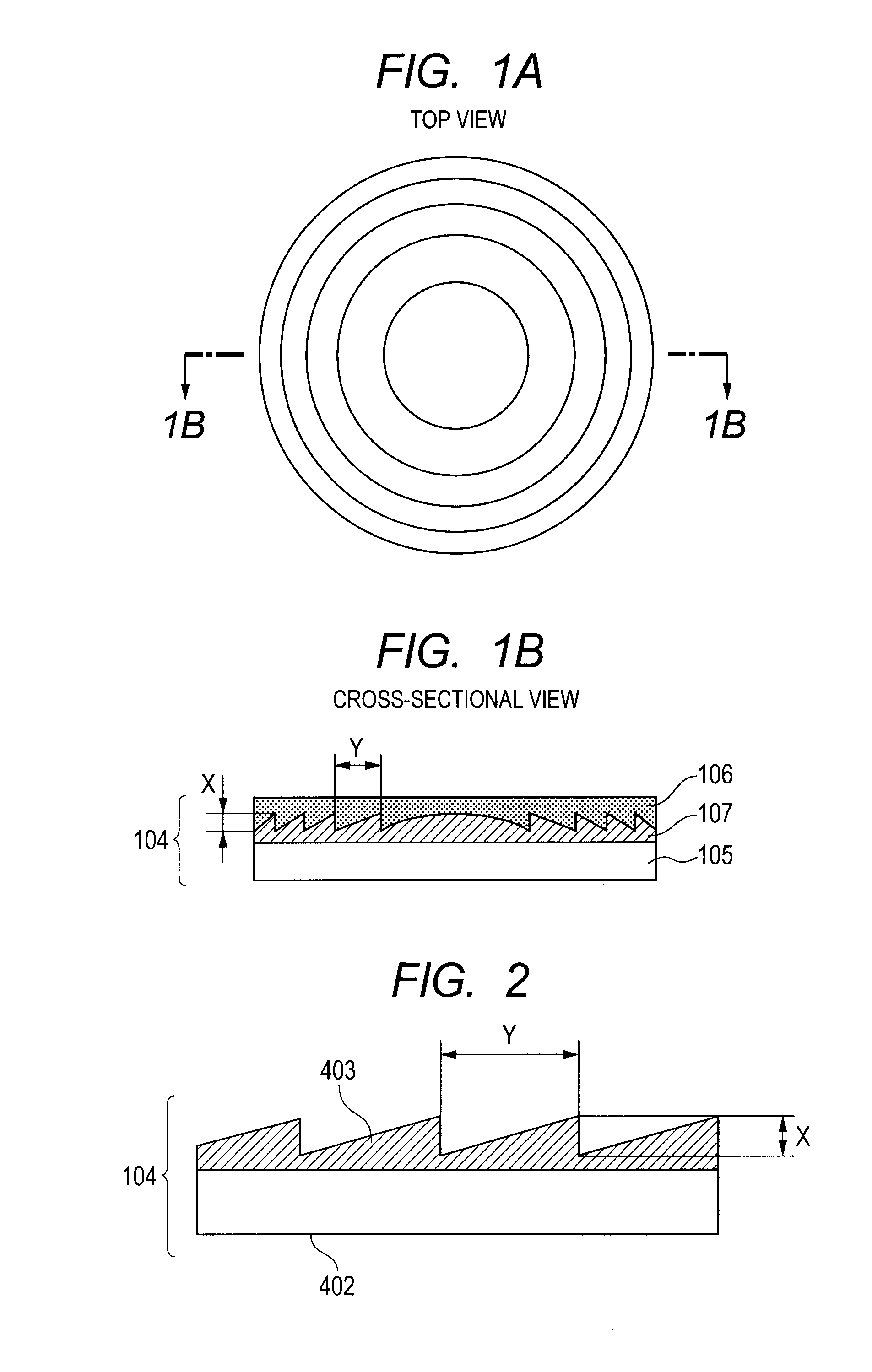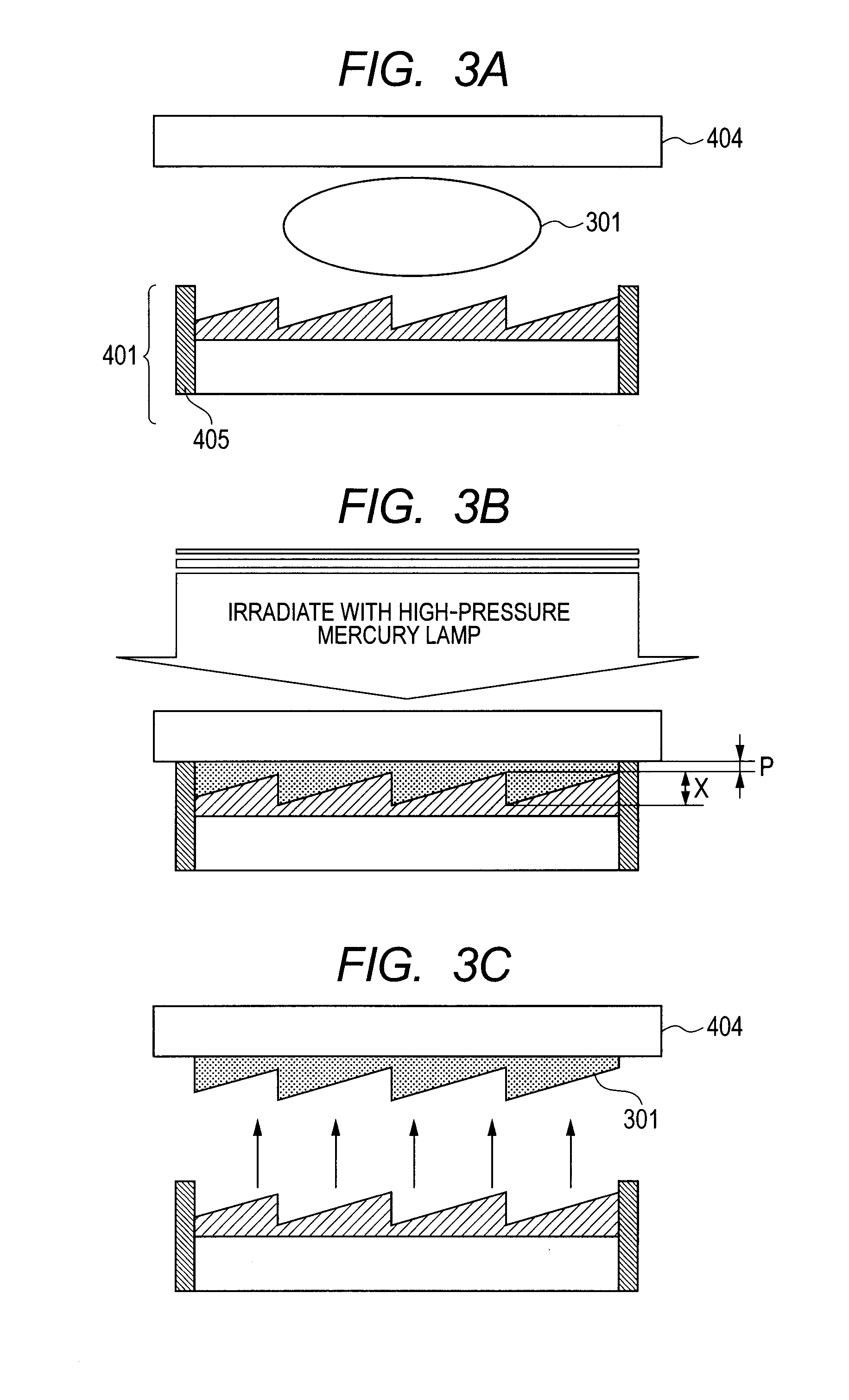Laminated diffractive optical element
a diffractive optical element and diffractive optical technology, applied in the field of laminated diffractive optical elements and optical systems, can solve the problems of difficulty in sufficiently correcting chromatic aberration, and achieve the effect of reducing shading and reducing transmittance variation
- Summary
- Abstract
- Description
- Claims
- Application Information
AI Technical Summary
Benefits of technology
Problems solved by technology
Method used
Image
Examples
example 1
[0061]A material (a) for forming a first layer having high refractive index and low dispersion characteristics and a material (b) for forming a second layer having low refractive index and high dispersion characteristics were manufactured as follows.
[A Method for Manufacturing the Material (a) for Forming a Layer Having High Refractive Index and Low Dispersion Characteristics]
[0062]ZrO2 fine particles having an average primary particle diameter of 3 nm were dispersed using a surface-treating agent and toluene solvent to prepare slurry of 10 wt % ZrO2 fine particles. A photocurable acrylic resin was prepared as a resin. Sumipast Black HB and SDO-13 manufactured by Sumika Chemtex Co., Ltd. were prepared as colorants.
[0063]The slurry was compounded into 22.6 vol % ZrO2 fine particles relative to the resin volume, blended, and compatibly dissolved. Subsequently, the colorants were compounded into 0.21 wt % Sumipast Black HB and 0.26 wt % SDO-13 relative to the total weight of the resin ...
examples 2 to 5
[0090]In Examples 2 to 5, in manufacturing of the material (a), slurry was compounded into one of 5.4, 0.0, 20.0, and 10.1 vol % ZrO2 fine particles relative to the resin volume in comparison to Example 1. Each of the materials (a) 202 to 205 was produced as in Example 1 except that one of 0.19, 0.12, 0.15, and 0.08 wt % Sumipast Black HB was compounded relative to the total weight of the resin and the ZrO2 fine particles and one of 0.24, 0.15, 0.18, and 0.10 wt % SDO-13 was compounded relative to the total weight of the resin and the ZrO2 fine particles.
[0091]In Examples 2 to 5, in manufacturing of the material (b), each of the materials (b) 302 to 305 was produced as in Example 1 except for the alteration to one of 15.0 and 7.5 vol % ITO fine particles relative to the resin volume in comparison to Example 1 and the alteration from a photocurable fluorine-containing acrylic resin to a photocurable acrylic resin in Examples 4 and 5.
[0092]In Examples 2 to 5, in manufacturing of the l...
PUM
 Login to View More
Login to View More Abstract
Description
Claims
Application Information
 Login to View More
Login to View More - R&D
- Intellectual Property
- Life Sciences
- Materials
- Tech Scout
- Unparalleled Data Quality
- Higher Quality Content
- 60% Fewer Hallucinations
Browse by: Latest US Patents, China's latest patents, Technical Efficacy Thesaurus, Application Domain, Technology Topic, Popular Technical Reports.
© 2025 PatSnap. All rights reserved.Legal|Privacy policy|Modern Slavery Act Transparency Statement|Sitemap|About US| Contact US: help@patsnap.com



